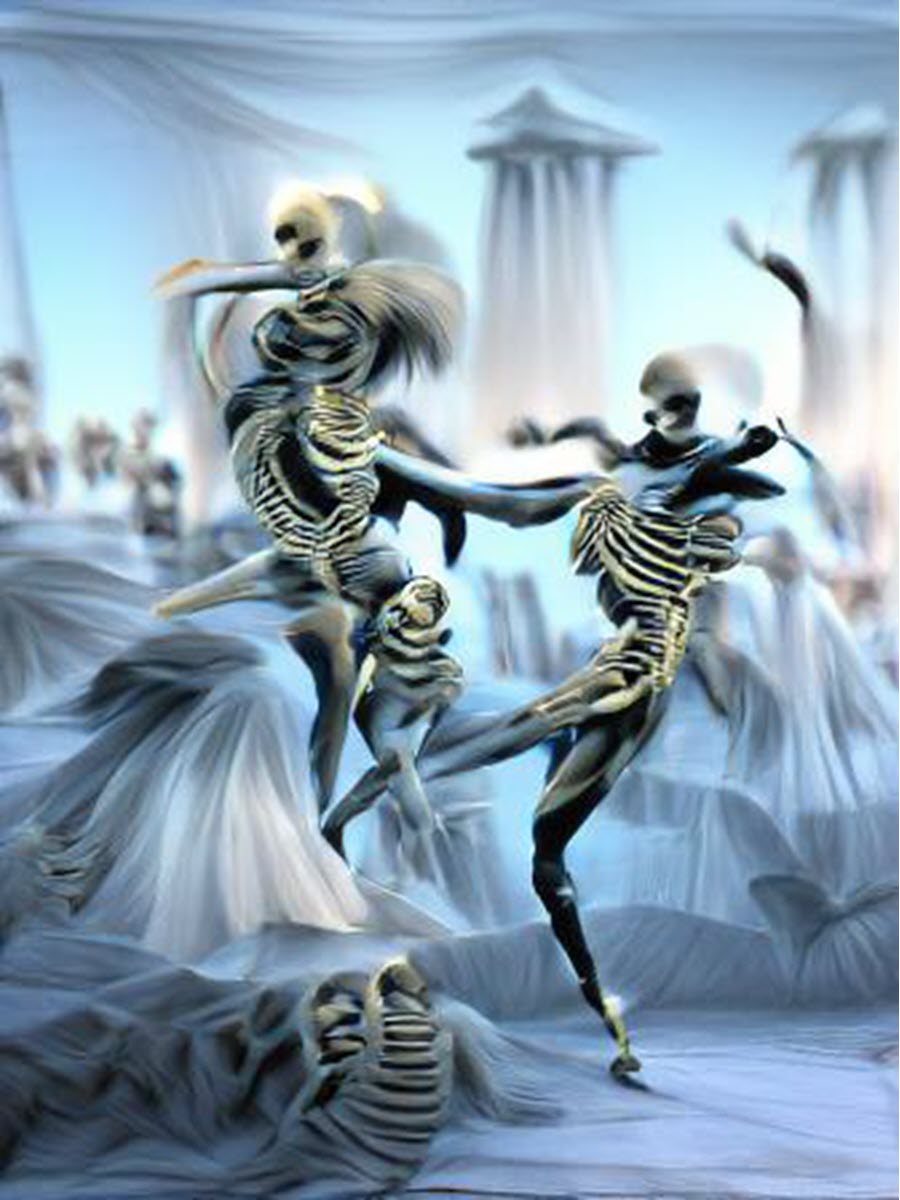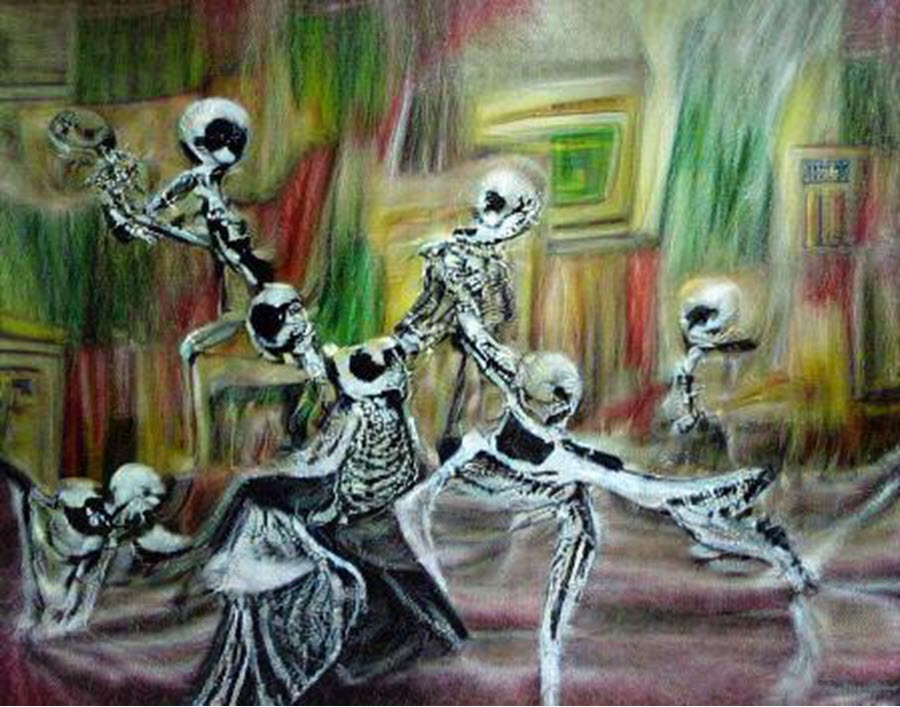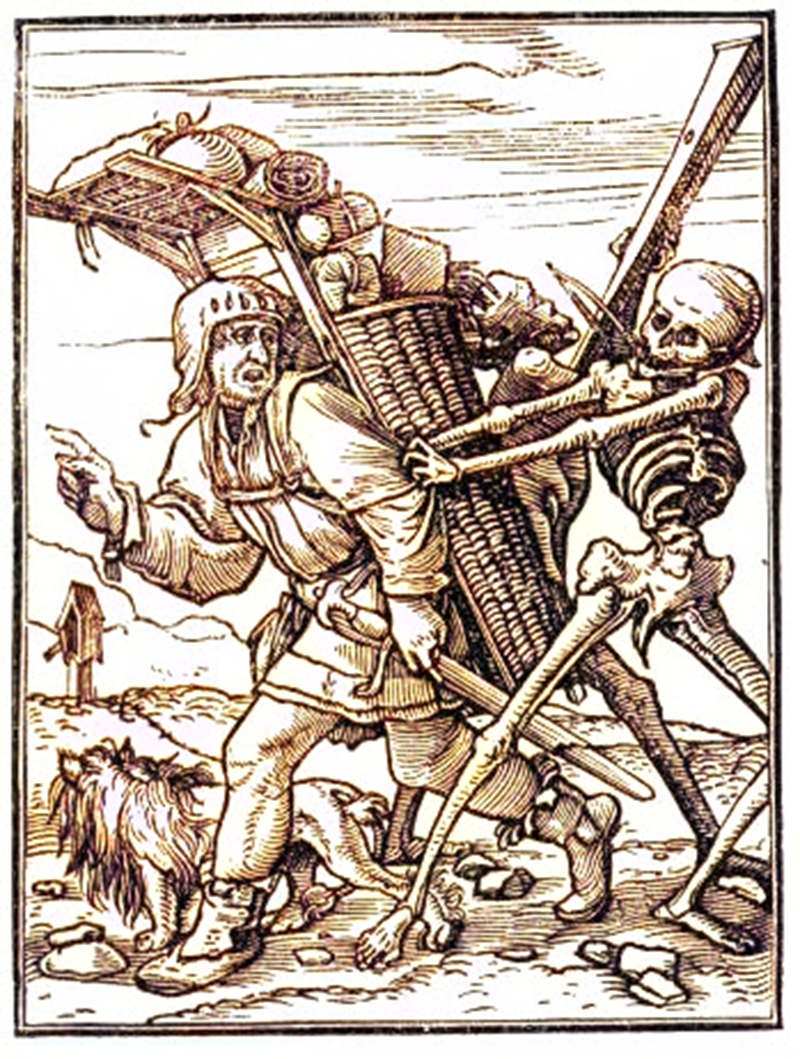Dance of Death is a website dedicated to exploring the macabre and fascinating world of the medieval Danse Macabre. This unique art form depicts the inevitability of death and the futility of resisting its embrace through eerie and haunting illustrations and literature. Our website offers a comprehensive look at the history, symbolism, and cultural significance of the Dance of Death, as well as a vast collection of images and texts from different eras and regions. Whether you're an art lover, a history buff, or simply curious about the darker side of human nature, Dance of Death is the perfect place to immerse yourself in this timeless and enigmatic tradition.

The Dance of Death goes by many names in different cultures. In Latin it was called the Chorea Machaboereum. In French it is called La Danse Macabre, the macabre dance. And in German it is called Totentanz. There is even a Spanish poem from the 14th century called the Universal Dance of the Dead, telling a similar version of the allegory. The names may differ, but the dance goes on forever and its allegorical meaning has endured through the centuries, so that even though it may not be called expressly the dance of death in modern pop culture, the dance of death remains a powerful artistic and allegorical motif.
The central message or meaning of the dance of death is that this world is temporary and any worldly riches or power that you may accumulate will all disappear, because death always wins. For historical reasons, which will be discussed below, this message has traditionally been depicted in the form of Death dancing with an unwilling partner, leading them to their final destination. The dance of death originated as an actual dance, a form of morality play, that would be staged in medieval villages throughout France and Germany in which persons dressed as the Grim Reaper would dance with people representing various elements of medieval society, such as priests or noblemen, and lead then to their doom. The idea was to show that it did not matter what your station in life was, death was the great leveler.

More fundamentally, these morality dances were meant to show that death could come upon you unexpectedly, so it was important to live a good life and be prepared to meet one's maker at any moment. Given the precarious existence of medieval people, and the ever-present risk of plagues, wars, and famine, this message might not have needed that much reinforcing, but the dance of death, which was staged in towns and villages, seems to have been a popular entertainment. The chief character was Death, usually personified as a dancing jovial skeleton (apparently the Grim Reaper enjoys his work) enticing an unwilling partner to join him in a final dance.
In its earliest form, the dance of death was an actual dance and at the same time an allegory, in which the character personifying death would dance with other actors or dancers representing different types or levels of medieval society. The staging of the dance would differ somewhat from village to village, but the central theme remained the same: life is fleeting. The dance served as a form of memento mori.
Notably, the central message of the dance of death, that life is fleeting, was not meant to exhort people to make the most of their lives, to YOLO (in the modern vernacular). Quite the opposite, the moral lesson being taught was that men and women might face Judgment before God at any moment and therefore they should stay safely within the confines of the Church's teachings. It was a propaganda tool that seems to have been very effective.
In time, the dance of death transcended the level of a mere village pantomime and became an important cultural motif. It began to be depicted in images in churches and cemetery walls, and later in early woodcut and printed books. At first the visual representations were crude, no better than stick figure skeletons, but in time, as the cultural importance of the dance of death grew, so too did the care and attention devoted to depicting its central message. In time, many significant artists such as Holbein and Rowlandson devoted their skills to depicting the dance of death. Many of these works are collected here on this website.
The prevalence of the Dance of Death as a cultural motif and allegory reached the height of its popularity during the Middle Ages and Renaissance, likely spurred by the uncertainty of life at the time, when plagues and wars made life extremely precarious. However, the dance of death has remained a powerful allegory, and many of its central images have been woven into modern pop culture including music and movies.
Naturally, the dance of death did evolve somewhat with the times, changing from simple peasant's play to elaborate woodcuts and paintings, and even orchestral scores. The way that the message was expressed also changed. At first the depictions of Death and his skeletal servants were grim and humorless, in keeping with the ponderous religious message being conveyed. During the Renaissance, a shift occurred in how people viewed themselves and this is also reflected in the depictions of the dance of death from the Renaissance period. The new spirit of that age caused the dance of death to be depicted with elements of satire and humor, even irreverence.
Here we have collected information about the dance of death, its meaning, and its expression in various forms in art and culture from the Middle Ages down to the present.

In this scene from Holbein's Dance of Death, a merchant preoccupied with his worldly goods tries to escape the clutches of a skeleton who is going to make him join the dance. Note the rich detail of the etching, which in addition to conveying an allegorical meaning, makes the daily life of the Middle Ages vividly real.
Updated: march 10, 2023